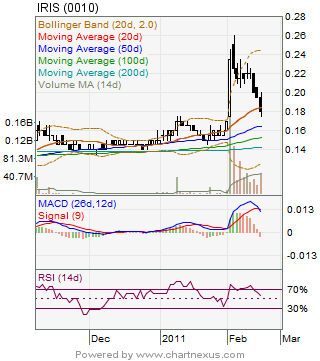In the early 1990s, Jeff Bezos had a vision to revolutionize book buying through an online platform. With a small investment of $10,000, he founded Amazon.com in 1994 as an online bookstore.
Despite initial skepticism and being considered a penny stock, Amazon steadily grew by prioritizing customer satisfaction and embracing innovative technologies. Today, it has transformed into a global e-commerce giant that has reshaped consumer behavior and expanded into various industries beyond books.
| Key Factors | Description |
|---|---|
| Customer Focus | Personalized recommendations, hassle-free returns, and timely delivery prioritize exceptional customer service. |
| Technological Innovation | Features like one-click ordering and Prime membership enhance the shopping experience. |
| Diversification | Ventures like Kindle e-readers, Amazon Studios, and Amazon Music showcase expansion into different industries. |
Jeff Bezos’ Vision for Growth and Diversification
Under Jeff Bezos’ visionary leadership, Amazon transformed from an online bookstore into the “everything store” we know today. Bezos had a grand vision of offering customers anything they needed, leading to continuous innovation and expansion.
Amazon diversified its product offerings, ventured into new markets through strategic acquisitions, and invested in cutting-edge technologies like AI and robotics. This global approach allowed Amazon to establish itself as a leader in convenience and customer satisfaction, solidifying its position as a retail powerhouse.
The Gradual Climb of Amazon’s Stock Price Over the Years
Under Jeff Bezos’ leadership, Amazon’s stock price has steadily risen, transforming the once humble penny stock into one of the most valuable companies globally. As Amazon expanded and diversified its business, investors who recognized its potential saw their investments multiply many times over.
Today, Amazon’s stock price reflects its global dominance and market confidence in its ability to innovate and deliver value. Strategic acquisitions, a focus on customer satisfaction, and technological advancements have all contributed to this upward trajectory.
Definition and Characteristics of Penny Stocks
Penny stocks are low-priced stocks with a market capitalization below a certain threshold. Typically trading below $5 per share, these stocks are associated with small or newly established companies that have high growth potential but also come with higher risks.
Due to their affordability, penny stocks attract individual investors looking for opportunities in the stock market. However, it’s important to exercise caution as they often lack liquidity and may be listed on less regulated exchanges or over-the-counter markets.
Thorough research and consultation with financial advisors are recommended before investing in penny stocks.
Risks and Potential Rewards Associated with Investing in Penny Stocks
Investing in penny stocks can be highly risky due to their volatility and lack of liquidity. These stocks are often subject to manipulation by unscrupulous individuals who take advantage of unsuspecting investors.
However, investing in penny stocks also presents the opportunity for significant gains if the right company is chosen and its growth potential is realized.
Despite their low share prices, penny stocks carry inherent risks. Their susceptibility to price manipulation and limited trading volumes make them vulnerable to fraudulent schemes and illiquidity. Investors may fall victim to pump-and-dump schemes or find it difficult to buy or sell shares at desired prices.
However, diligent research and analysis can help identify promising companies among the multitude of high-risk penny stock investments. By considering a company’s fundamentals and diversifying one’s portfolio, investors can mitigate risk while potentially benefiting from any substantial gains.
In summary, while investing in penny stocks carries risks, careful selection and management can lead to significant rewards when the right company is chosen and its growth potential is realized. It is crucial for investors to approach these investments with caution and a realistic understanding of the associated risks.
Importance of Conducting Thorough Research Before Investing
Before investing in penny stocks, conducting thorough research is crucial. This includes analyzing financial statements, evaluating management teams, and assessing the competitive landscape. Without proper due diligence, investing in penny stocks can be akin to gambling rather than informed investing.
By conducting research, investors can reduce uncertainty and make more informed decisions about the companies they consider investing in. Remember, investing should be a calculated endeavor rather than a game of chance, and thorough research is an essential step towards successful penny stock investing.
Analyzing the Key Factors that Contributed to Amazon’s Growth and Success
Amazon’s rise to become one of the world’s most valuable companies can be attributed to several key factors. Firstly, continuous innovation and expansion into new markets have played a vital role in Amazon’s success story.
With its ability to adapt and innovate, Amazon has consistently pushed boundaries and entered new sectors, such as cloud computing through Amazon Web Services (AWS) and streaming services with Amazon Prime Video.
These forays into untapped markets have not only diversified their revenue streams but also contributed significantly to the company’s overall growth.
Secondly, Amazon has built a strong brand reputation based on exceptional customer service, fast delivery times, and a seamless shopping experience. By prioritizing customer satisfaction above all else, they have successfully fostered customer loyalty and earned a devoted following.
This positive reputation has not only driven sales but also bolstered investor confidence in the company’s long-term prospects.
Thirdly, investments in technology and infrastructure improvement have been pivotal to sustaining Amazon’s growth trajectory. The company has made substantial investments in developing cutting-edge technologies like drone deliveries and building massive warehouses for efficient order fulfillment.
These endeavors have allowed them to stay ahead of competitors while continuously improving their operational efficiency.
In summary, a combination of continuous innovation, strong brand reputation, customer loyalty, and strategic investments in technology and infrastructure have propelled Amazon’s growth and success.
By consistently pushing boundaries, adapting quickly to changing market dynamics, and prioritizing customer satisfaction above all else, Amazon has cemented its position as an industry leader in e-commerce and beyond.
Conducting Thorough Research on the Company and its Industry
When it comes to investing in penny stocks, conducting thorough research on both the company and the industry it operates in is crucial. This step is vital because it provides valuable insights that can help investors make informed decisions.
Firstly, analyzing the financial statements of a company is essential. By carefully examining balance sheets, income statements, and cash flow reports, investors can gain an understanding of the company’s financial health.
Evaluating factors such as revenue growth, profitability, debt levels, and liquidity can provide valuable indicators of how well-positioned the company is for future success.
Understanding market trends is equally important. Keeping track of consumer preferences, technological advancements, regulatory changes, and other market dynamics allows investors to assess whether the company’s products or services are in demand.
Additionally, observing how the industry as a whole is evolving helps determine if there are any emerging opportunities or potential threats.
Furthermore, evaluating competition provides valuable insights into a company’s positioning within its industry. Identifying key competitors and analyzing their strengths and weaknesses allows investors to gauge whether a particular company has a competitive advantage.
This analysis can include factors such as market share, product differentiation, pricing strategies, and customer loyalty.
Assessing growth potential is another crucial aspect of research. Investors need to evaluate whether a company has solid prospects for future expansion and profitability. This involves examining factors such as market size, target demographics, innovation capabilities, intellectual property rights, and strategic partnerships.
[lyte id=’CWoPJUdBp_4′]






